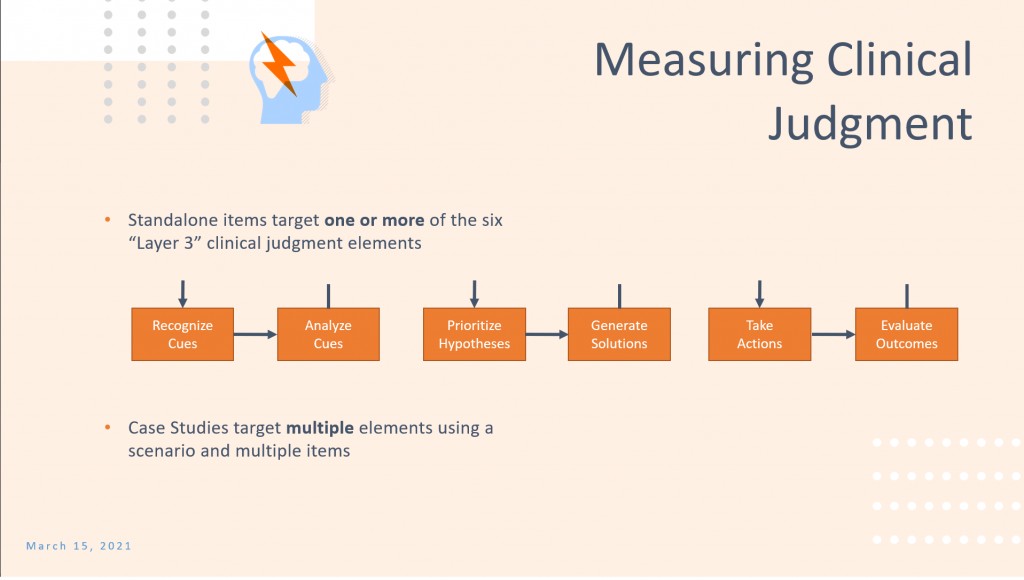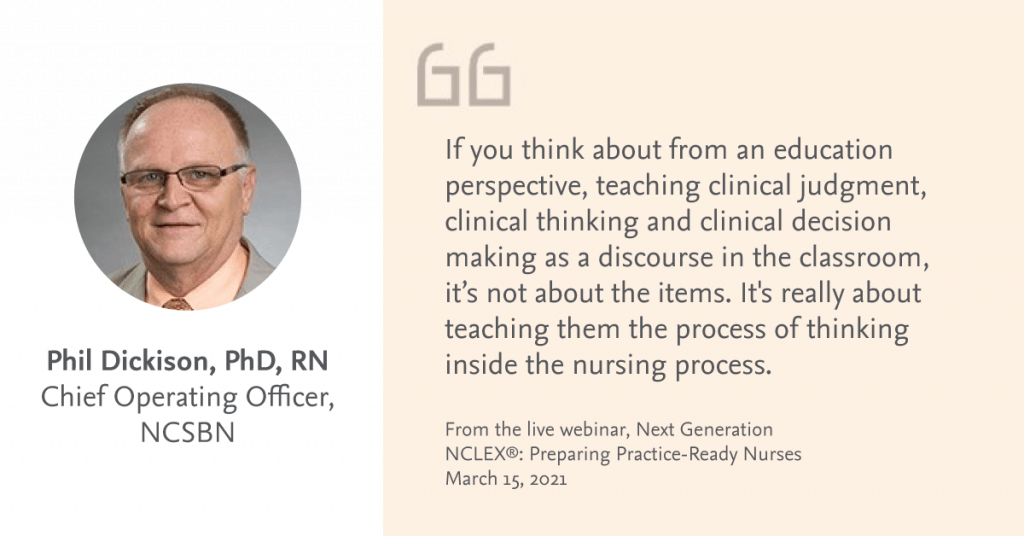
The Next Generation NCLEX® (NGN) is coming, bringing a change not only to the way the test is designed, but how future nurses need to be thinking in any given clinical situation. Although there is time before the new exam rolls out (no sooner than April 2023), this is a looming change for nursing programs to focus more on clinical judgment and new test items and preparation for this change needs to be taken sooner rather than later.
On Monday, March 15, Elsevier hosted the NGN digital event, Next Generation NCLEX®: Preparing Practice-Ready Nurses, with a host of key NGN players, including NCSBN’s Chief Operating Officer Phil Dickison, Elsevier authors Donna Ignatavicius and Linda Silvestri, and Elsevier’s Director for HESI Content Operations Donna Spivey, giving faculty an insight to new test updates and how they can plan ahead in their courses. Here are some of the key takeaways from the event:
Updates from the NCSBN
- New item types include variations of the highlight, drop down, multiple response, drag and drop, and multiple-choice items and these will be used in unfolding case studies. The standalone clinical judgment scenarios will include the bowtie and trend items.
- Unfolding case studies will include six items in a case, with a rendition of a client care record that provides data as the basis for the questions. Item types are associated with the six cognitive skill outlined in Layer 3 of the NCSBN Clinical Judgment Measurement Model (NCJMM) tested in these case studies.
- Standalone items will include similar client care record tabs with information regarding the question, but there will be one single test item monitoring aspects of clinical judgment compared to the unfolding case study.

- The new scoring model will have polytomous scoring with partial credit given to nursing candidates to accommodate a more precise measurement for the new item types. This also reduces the impact of random guessing. The partial credit varies among the different item types.
- The minimum length exam will include 3 case studies (18 items) and 52 scored knowledge items (or current NCLEX test items), which provide 70 total scored items; 15 unscored (pretest) items will also be included on the exam.
- The maximum length exam includes the same amount of case study items, but will incorporate up to 117 current items and about 10% clinical judgment standalone items, increasing the total scored items to approximately 135; 15 unscored items will also be included All candidates will have up to five hours to complete the exam.
Rollout Plan for Faculty
- To prepare students for the NGN, Donna Ignatavicius and Linda Silvestri suggest three phases: 1) focus on clinical judgment, 2) introduction to the new NGN test items, and 3) readiness for the NGN.

- In the first phase, starting in fall 2021, faculty should introduce clinical judgment as the thinking process that builds on the nursing process, use active learning strategies that require student thinking, and manipulate clinical situations to require critical thinking among a number of other activities that focus on the clinical judgment mindset.
- In the second phase, starting in spring 2022, faculty should begin to use unfolding case studies and practice new NGN test formats in the classroom, clinical or simulation lab settings, help students understand what cognitive skills are being measured with new item test types, and review clinical scenarios and test items, discussing rationales to help students improve performance.
- In the third phase, starting in fall 2022 and leading up to the NGN, faculty should gradually increase the inclusion of NGN-style test items on exams in more complex unfolding and standalone clinical scenarios from course to course until the actual NGN test design is accomplished prior to graduation.
Insights from Phil Dickison and Donna Spivey
- Classroom discourse will be vital to making sure students are practice-ready–the real goal of the NCLEX is ensuring public safety and having students self-actualize as a nurse; teaching students this lesson early on is key.

- To bring clinical judgment to the forefront of simulation and clinical lab, faculty should focus on how students think through their decision-making process in addition to whether they did the right thing in the given clinical scenario.
- Regarding NCLEX pass rates, students who are taking minimum-length exams and passing are doing well with clinical judgment based on the special research section. Those who are taking the maximum-length exam will be the most impacted by the NGN.
- A validity framework is underway through the NCSBN on the NCJMM that will soon be available to the public to highlight the reviews and studies that took place to validate the model.
The Next Generation NCLEX is coming. As your trusted partner in preparing students for NCLEX success, Elsevier wants to help you stay up to date with the latest developments related to the Next Generation NCLEX (NGN). Be sure to bookmark our website as your one-stop destination for all things NGN — from breaking news from the NCSBN, to strategies for incorporating more clinical judgment activities into your curriculum, and everything in between. Click here to view the full recording of our live event.